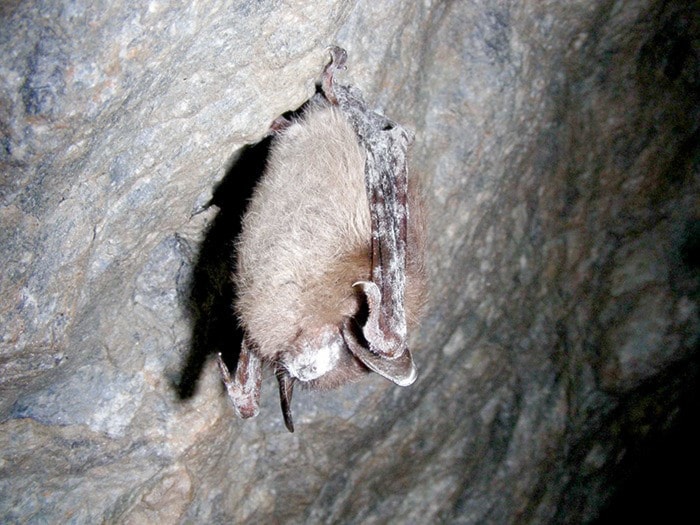White-nose syndrome isn’t just something you might see at unsavoury parties, it’s also a deadly disease that has been wiping out bat populations in much of North America.
The disease was first detected in New York in 2006, and by 2010 it reached Canada and has been moving west ever since.
The first dead bat from white-nose syndrome was found near Seattle, Washington on March 31 and the B.C. government and conservation organizations are reaching out to the public to help prevent possible devastation to bat populations on the West Coast.
“The reason this is so shocking is prior to the Washington State case the nearest westernmost connection was 2,000 km away so we thought we had more years before it was going to reach this far west,” said Ashleigh Ballevona, the co-ordinator of the Skeena Bat Program.
White-nose syndrome is a fuzzy white fungus that grows on exposed skin on the bats while they hibernate over the winter. The fungus can be seen on their ears, muzzles and wings but it also affects their tissue and blood vessels. Eventually the bat dies of dehydration and starvation.
“It hits them when they’re hibernating and hibernating in large numbers, so when it hits them it wipes out a lot of bats in one go,” Ballevona said.
Spring is the best time to detect the disease as the bats leave the caves to build roosts.
The Skeena Bat Program was initiated in 2014 to work with the public in monitoring bat populations in the region.
The organization is asking the public to report any sightings of dead bats and bat roosting sites in buildings, such as bat houses, attics and sheds.
Since the first case in New York, there have been six million bat deaths reported in eastern North America.
The disease hasn’t gone further east than Georgia until it jumped to Washington state this year. Researchers are still trying to determine if it’s the same strain as what has been affecting bats in the East.
Ballevona said there is no known human risk to white-nose syndrome but if someone finds a dead bat she asks they report the discovery to the Skeena Bat Program, and to collect a specimen while wearing gloves.
The Skeena Bat Program is also looking for volunteers from Prince Rupert who will participate in the annual bat count.
For more details contact skeena@bcbats.ca
